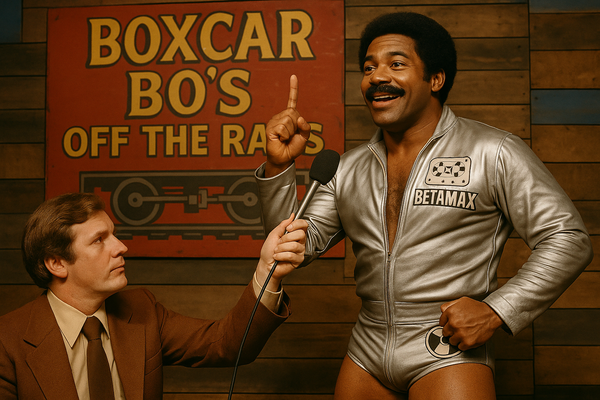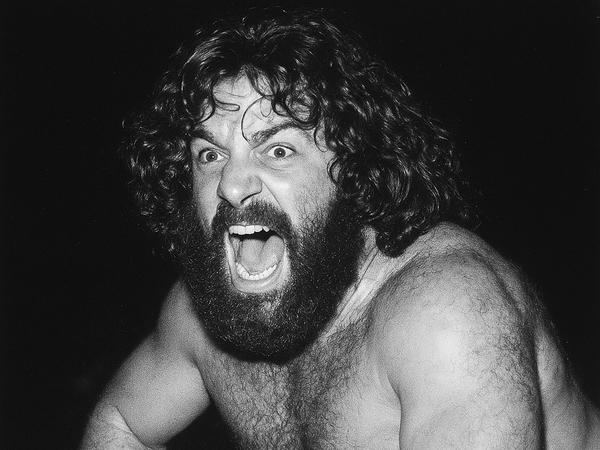The Betrayal and Redemption of The Outlaw Jesse Hawkins

The official narrative of the Great Western Wrestling Alliance (GWA) weaves the gripping tale of Jesse Hawkins and Tommy Tucker, two wrestlers who form the formidable tag team "The Renegade Riders." Their journey through the wrestling world is fraught with challenges, from their meteoric rise and the dynamics of their partnership to the trials they face due to external manipulations and personal misunderstandings. Set against the backdrop of the GWA's vibrant and competitive scene, the story explores themes of ambition, loyalty, and the quest for redemption, all while keeping the reader on the edge of their seat, eager to witness the unfolding of this dramatic saga without revealing the ultimate climax of their journey.
Introduction
In late 1970, "The Outlaw" Jesse Hawkins was a name long whispered through the corridors of the Great Western Wrestling Alliance (GWA). Having been a steady presence nearly since its inception in 1957, Jesse had carved out a reputation as a solid mid-card wrestler, a veteran of the mat who could always be relied upon for a match that was equal parts technical skill and roughhouse tactics. He wasn't the man the crowds loved to hate, but rather one they respected with a touch of wary distance. His heel alignment was mild; he played the outlaw, not as a lawless villain, but as a renegade bound by his own set of rules.
Born and raised on a ranch in the dusty outskirts of Amarillo, Texas, Tommy Tucker's introduction into GWA marked the beginning of a new era. As a quintessential All-American greenhorn Cowboy-filled with ambition, Tommy brought a fresh perspective and enthusiasm. Under Jesse's guidance, a unique mentor-mentee relationship formed, combining Jesse's experience and rebellious approach with Tommy's raw talent and ambition. This dynamic duo's journey began with Jesse imparting his knowledge and skills, setting the stage for their rise as a formidable tag team in the wrestling world.
In early 1971, the GWA decided to establish a permanent Tag Team division, with established partnerships. The plan was to allow a few tag teams to cement themselves together before holding a Tag Team Tournament the next year for the GWA Tag Team Championship belts. It wasn't long before the GWA took notice of the budding camaraderie between Hawkins and Tucker. Promoters, ever vigilant for fresh narratives, saw a goldmine in the odd coupling of the seasoned heel and the up-and-coming babyface. They proposed a tag team, a partnership that would bring together the best of both worlds—The Outlaw's hard-earned experience and Tommy's raw, infectious energy. The duo hesitated, both aware of the risks involved in such an alliance, but the allure of greater fame and the promise of better bouts won out. They agreed, and so on February 6th of 1971 The Renegade Riders were born as they took on The Midnight Maracas at a recorded studio show in El Paso, TX.
Rise Of The Renegade Riders
In the early months of the Renegade Riders, the team of Jesse Hawkins and Tommy Tucker showcased a striking dynamic. Jesse's seasoned experience and renegade style blended with Tommy's raw enthusiasm and fresh approach to wrestling. This contrast not only enhanced their performances but also led to a growing camaraderie, where each wrestler influenced and learned from the other.
The Renegade Riders were renowned in the GWA for their distinctive wrestling style and signature moves that perfectly complemented each other's strengths and personas. Jesse, with his rugged and brawler-like approach, brought raw power and resilience to the team. His style was grounded in traditional wrestling techniques, combined with a no-holds-barred attitude that made him unpredictable and formidable in the ring. Tommy, on the other hand, was known for his technical prowess and agility. His wrestling was more methodical, relying on speed and precision, making him the perfect counterbalance to Jesse's brute force.
Their unique partnership quickly translated into success and soaring popularity. They clinched notable victories against teams like The Midnight Maracas, Big Kat Round Bellies, and The Pacific Powerhouses; a testament to their developing synergy. These triumphs propelled them to the #1 ranking in the Inaugural Tag Team Rankings in the May 5, 1971 issue of The Grapple Gazette, capturing the hearts of fans and cementing their status as a top attraction in the GWA. They were the clear favorites heading into The Great Western Grand Tag Team Round-up at the end of the year.
Tensions and Tournament Downfall
The Renegade Riders weren't without challenge during this time period, however. Throughout late 1971 and early 1972, the road to the tournament became the first battleground for the Renegade Riders' enduring rivalry with The Iron Alliance. This fearsome duo, comprised of "Ironside" Ivan Gregorovich and "Steel Hammer" Hank Roberts were managed by the shrewdest GWA manager, Ivan Petrovich "The Iron Fist" and were the absolute demonstration of coordinated power. Despite holding the top-ranked ranking, Jesse Hawkins and Tommy Tucker found themselves embroiled in a series of matches that would test not only their skill but the very foundation of their partnership. The Iron Alliance, a team known for their cunning and ruthless tactics, became the thorn in the Riders' side, their only defeats continually coming under questionable circumstances.
During the inaugural Great Western Grand Tag Team Round-up held in Colorado Springs, Colorado on February 19, 1972, the tension reached its zenith. The tournament promised glory and the inaugural Tag Team Championship belts, but for the Renegade Riders, it spelled disaster. Match after match, Ivan Petrovich "The Iron Fist" of The Iron Alliance manipulated outcomes with deceitful tactics. These actions not only undermined the integrity of the competition but also sowed seeds of doubt and discord between Jesse and Tommy. Petrovich's schemes were elaborate, casting shadows of betrayal by making it appear as if Tommy was throwing matches, even when they weren't wrestling against The Iron Alliance.
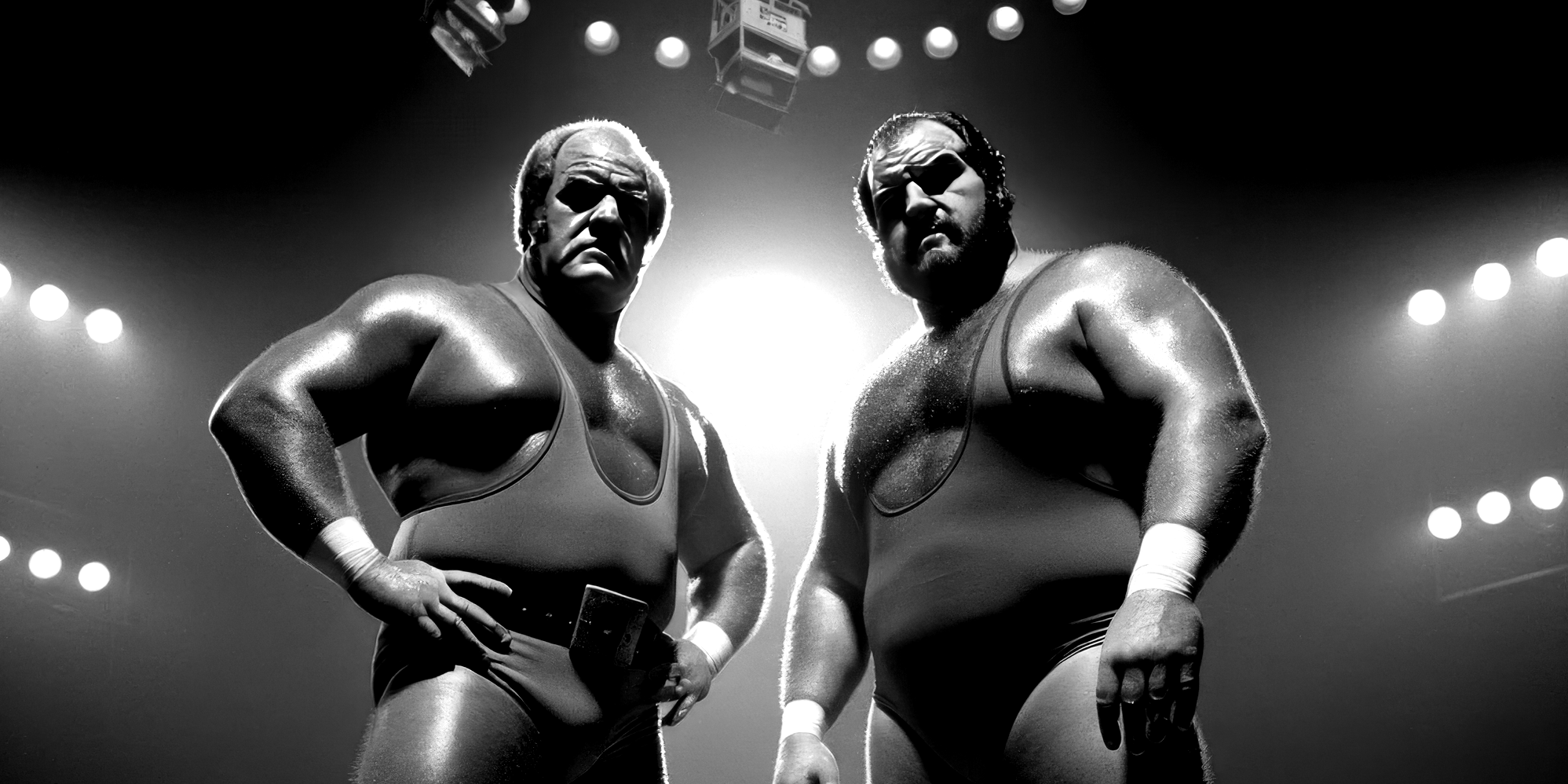
As each match in the tournament progressed, the Renegade Riders' morale plummeted. Each defeat added another layer of frustration, and the partnership that had once seemed unbreakable began to fray. The final blow came with the final Iron Alliance's victory. Crowned as the first GWA Tag Team Champions, their triumph was the Riders' nadir. As the previously ranked #1 team, the Riders had to hand a gloating Gregorovich and Roberts the championship belts.
The aftermath was a fractured duo. The once dynamic and cohesive Renegade Riders were now a study in dissolution. Jesse's trust in Tommy waned, clouded by the orchestrated betrayals, leading to a significant breakdown in their relationship and teamwork. This period marked the beginning of a lengthy, dark chapter in their storied partnership, as the specter of deceit and manipulation by The Iron Alliance cast a long shadow over their legacy.
Betrayal of Tommy Tucker
As the year progressed towards the dramatic events of a televised show from Hawkins' hometown of Santa Fe, New Mexico on October 28, 1972, the once unshakeable bond between he and Tommy Tucker, the Renegade Riders, began to unravel. The seamless teamwork that had defined their rise to prominence within the GWA was no longer evident. Matches that were once easily dominated by the duo became fraught with errors and miscommunications, signs of a deeper discord brewing beneath the surface. Ivan Petrovich's continued manipulations only deepened the rift, with tactics designed to sow doubt and suspicion between the partners.
Petrovich, exploiting the growing fractures within the team, escalated his efforts to drive a wedge between them. Tommy's entrance attire always included a leather riders' satchel, to complement his cowboy gimmick. The Iron Fist began dropping envelopes in Tommy's satchel during matches, a clear attempt to frame him for betraying Jesse. Unbeknownst to Tommy, Jesse intercepted one of these notes, which chillingly instructed, "Just get Hawkins in the ring and we'll do the rest." Convinced of Tommy's betrayal and fearing a setup during their upcoming match for the belts against the Iron Alliance in front of his hometown crowd, Jesse faced a critical decision.
On the night of the match, the tension reached its climax as the Riders made their way down the ramp to meet their opponents in the ring. Tommy, oblivious to the brewing storm, entered the ring, expecting Jesse to follow. Instead, he turned to find his partner gone, leaving him to face the Iron Alliance alone. The bell rang to start the match and Tommy was left to face the most formidable duo in the GWA alone. What followed was a brutal display of dominance by the Iron Alliance, with Tucker enduring a merciless beating.
In the aftermath of match that night, Jesse Hawkins embraced his role as the antagonist, delivering a promo that cemented his heel turn. He justified his actions with cold detachment, a stark departure from the camaraderie that had once defined the Renegade Riders. Tommy, in contrast, responded by addressing Hawkins directly, telling him he'd "ridden on Dusty Trails by myself so much, it outta be my first name, partner". Out of respect or something else, the fans began calling him "Dusty Trails" Tucker after that night. Despite the hurt and betrayal, his message was one of resilience and determination. He vowed to continue, to fight not just for titles but for the integrity and spirit of wrestling.
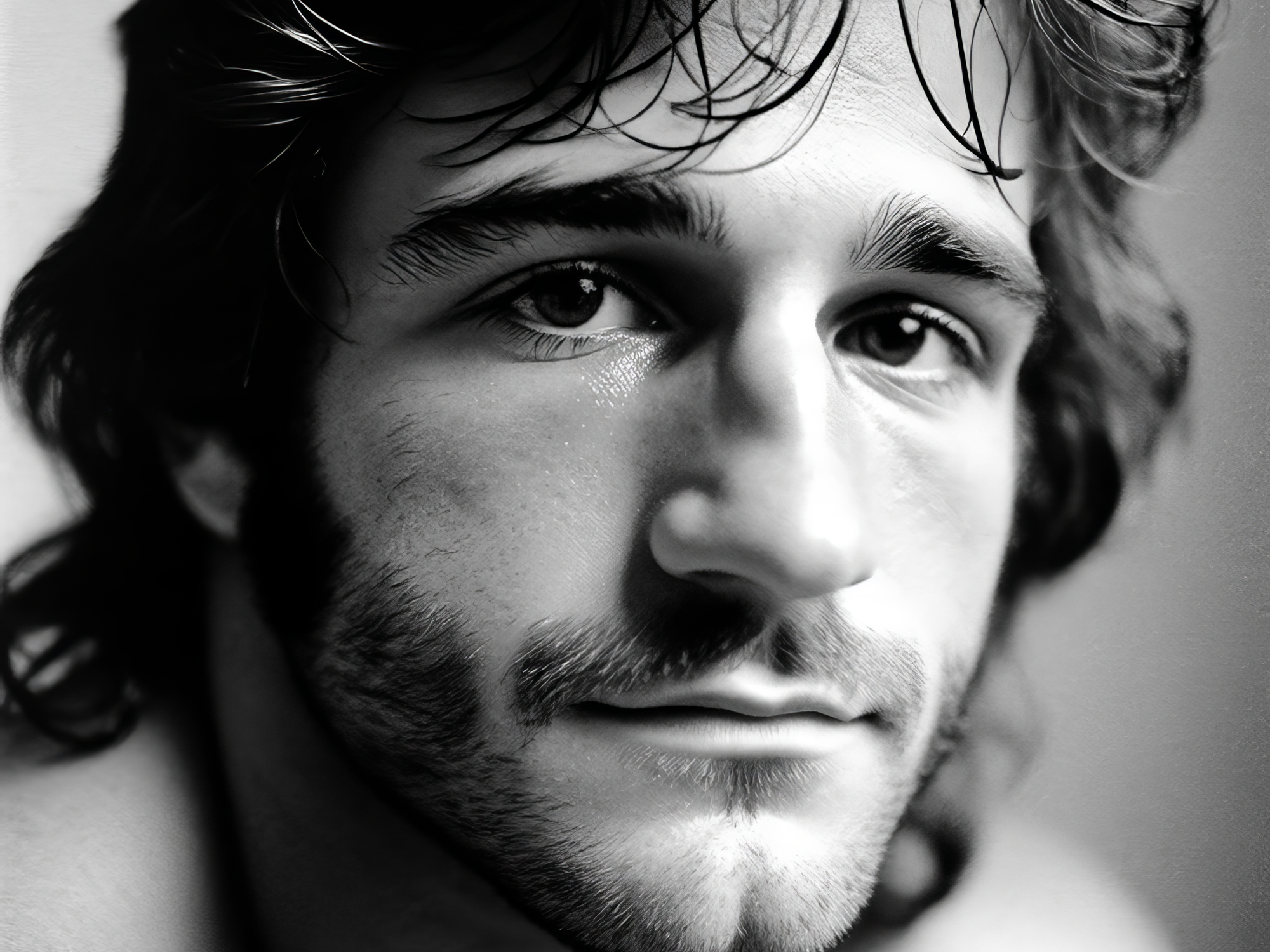
This pivotal moment marked not only the dissolution of one of GWA's most beloved tag teams but also set the stage for their individual journeys. Jesse, now a villain in the eyes of many, embarked on a path that would repeatedly test his resolve and character. Tommy, battered but unbroken, faced the future with a determination to reclaim not only his standing but also the trust and respect of the GWA audience. The echoes of their promos that night reverberated beyond the ring, setting the tone for their respective paths forward, forever altering the legacy of the Renegade Riders.
Jesse Hawkins' Solo Career
Jesse Hawkins' journey from a tag team specialist to a solo wrestling icon in the GWA is a saga marked by both astonishing achievements and poignant transitions. The period between late 1972 until approximately mid-1974 was perhaps the most defining era of Hawkins' career, featuring his triumphant victory over 5-time champion "Mountain Man" Mark Jensen for the GWA World Heavyweight Championship and ending with his eventual defeat and respectful departure to "Harlem Hurricane" James Washington.
Made it to the top of the mountain... MAN!
On April 20, 1973, Jesse Hawkins achieved what many thought was the pinnacle of his wrestling career. He faced off against "Mountain Man" Mark Jensen, a dominant force in the ring known for his sheer strength and signature 'Boulder Slam'. Hawkins, employing a blend of charismatic showmanship and rule-bending tactics, managed to outwit and overcome Jensen in a match that would forever be remembered in GWA history. This victory was not just about physical prowess; it was a testament to Hawkins' cunning and his ability to engage and captivate the audience, turning the tide of the match in his favor when it mattered the most.
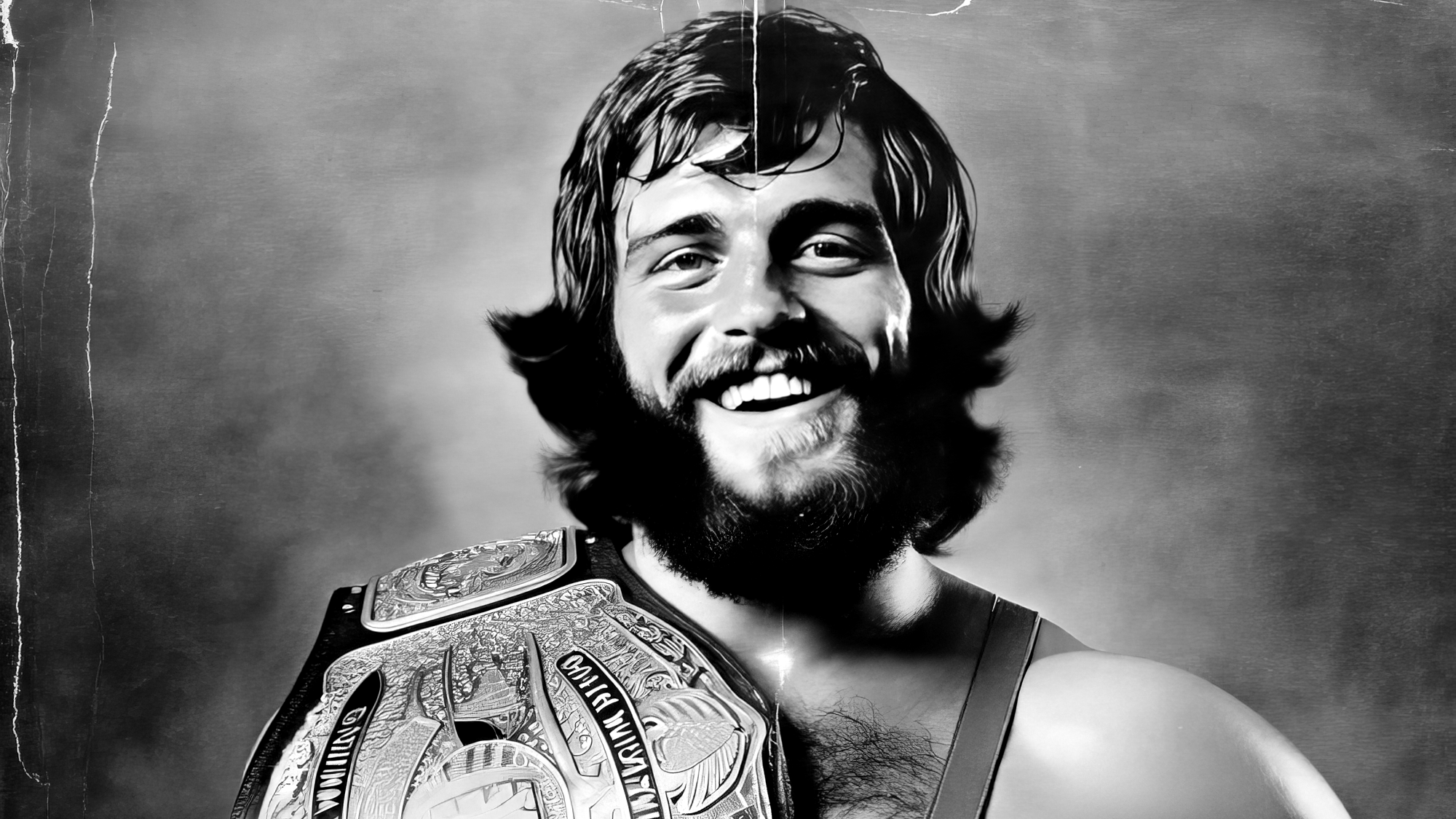
Hawkins' reign as the GWA World Heavyweight Champion was characterized by the "One Way Out" era, a time when he became infamous for bending the rules to maintain his edge over opponents. Despite his rule-bending antics, Hawkins rarely resorted to outright cheating, especially against face (heroic) opponents, choosing instead to feud with heels (villains) in a manner that kept the audience on the edge of their seats.
The climax of Hawkins' solo career came on April 27, 1974, in a stunning and unexpected turn of events. In a "Loser Leaves Town" match on a card held in Los Angeles, Hawkins was forced to submit by the "Harlem Hurricane" James Washington, marking the end of his reign as the GWA World Heavyweight Champion. This legendary match between two legends at their top was also the culmination of "The Rise of the Harlem Hurricane" storyline, and featured "Gridiron" Gregory Harris, a famous NFL player turned wrestler, joining Washington ringside to ensure the Outlaw played by the rules. While Harris did not get involved in the match, his presence influenced Hawkins' tactics, which were uncharacteristically by-the-book all night.
The defeat was a significant moment in Hawkins' career, not just for the loss of the title but for the manner in which he exited the GWA. During their promos leading up to the match, Hawkins had repeatedly mocked Washington saying things like "Harlem's hero, huh? Well, let me tell you, James, every hero has his downfall, and I'm the villain who's gonna write your tragic ending." In an act of sportsmanship and respect, Hawkins handed the belt directly to Washington, acknowledging his opponent's superior skill on that day before walking out of the arena. After handing the belt over, he put on his characteristic mirrored aviator sunglasses and walked down the ramp, out the arena, and out of the GWA for the foreseeable future.
It wasn't an accident that Hawkins title loss happened in Los Angeles, as he'd been in negotiations to stare in a movie and filming was about to begin. Jesse Hawkins' foray into Hollywood, marked by his lead role in "Outlaw Justice," was a challenging period that tested his versatility beyond the wrestling ring. Released on October 22, 1975, the film, set in a gritty urban San Franciscan landscape, featured Hawkins as Jack Dalton—a former police detective turned private investigator with a rebellious streak. Despite the anticipation, the film flopped at the box office, a stark contrast to his wrestling accolades. Rumors circulated about Hawkins' difficult behavior on set, often being under the influence, which overshadowed his work. The director defended Hawkins' talent but lamented his off-screen behavior, "Jesse can't act?! No, Hawkins is one of my extraordinarily talented actors I've ever worked with, it's just unfortunate he choses to act like a horses' ass most of the time", highlighting a tumultuous time in Hawkins' life. This phase also prominently featured the wild life at his large rented mansion in Laurel Canyon, away from the cheers of the wrestling world, was a chaotic period for Hawkins, leading to eventual personal and professional stumbles.
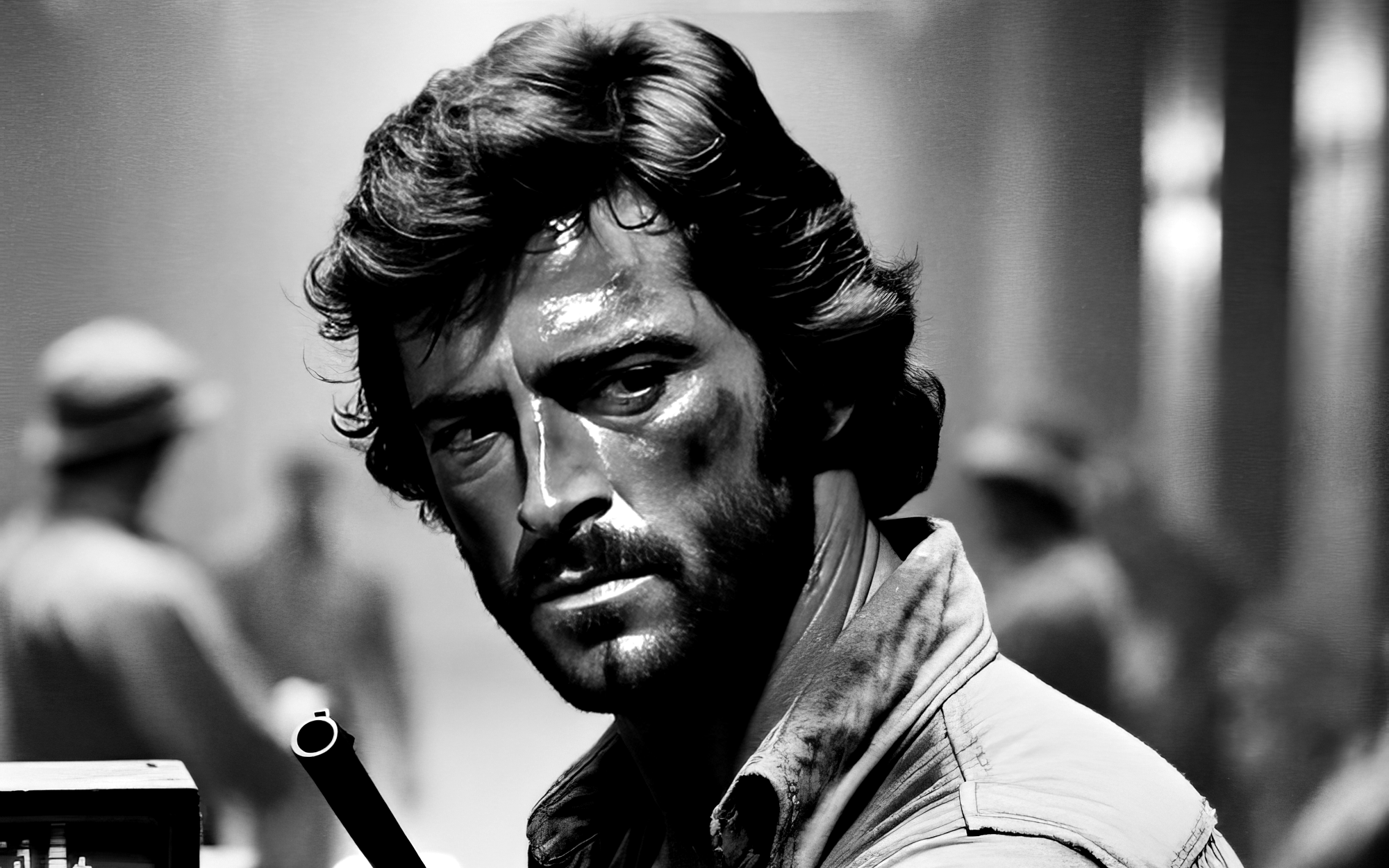
During his time in Laurel Canyon, Jesse Hawkins' life was a whirlwind of Hollywood excess and public spectacle. His rented house became notorious for lavish parties that attracted a mix of celebrities, musicians, and the occasional wayward fan, creating a melting pot of artistic and rebellious spirits. The nights were long, filled with live music, improvised jam sessions that lasted until dawn, and rumors of wild escapades that became the talk of the town. Hawkins was seen as the quintessential host, charming and unpredictable, embodying the spirit of the era's counterculture movement. However, these hedonistic pursuits also sparked controversies, with whispers of scandalous liaisons and unrestrained indulgences that often made headlines, overshadowing his attempts to establish himself as a serious actor.
Tommy Tucker's Struggles and Feuds
Following the dissolution of the Renegade Riders, "Dusty Trails" Tucker ventured into singles competition within the GWA, encountering an arduous path that tested his resolve and wrestling prowess. Initially, Tucker struggled to find his footing, grappling with the transition from tag team to singles matches. However, his undeniable talent and determination soon led to a series of victories, endearing him further to the fans and establishing him as a formidable solo competitor.
Tommy's journey took a challenging turn as he engaged in a bitter feud several members of The Industrial Revolution, a faction grown from Ivan Petrovich's stable of wrestlers including Tommy's old nemesis', The Iron Alliance, a hard-headed man named "The Enforcer" Eddie King, a brilliant tactical wrestler, "The Technician" Thomas Reed, and several others. Known for their commitment to the traditional styles of wrestling and their disdain for innovation, The Industrial Revolution took Tommy's evolution personally.
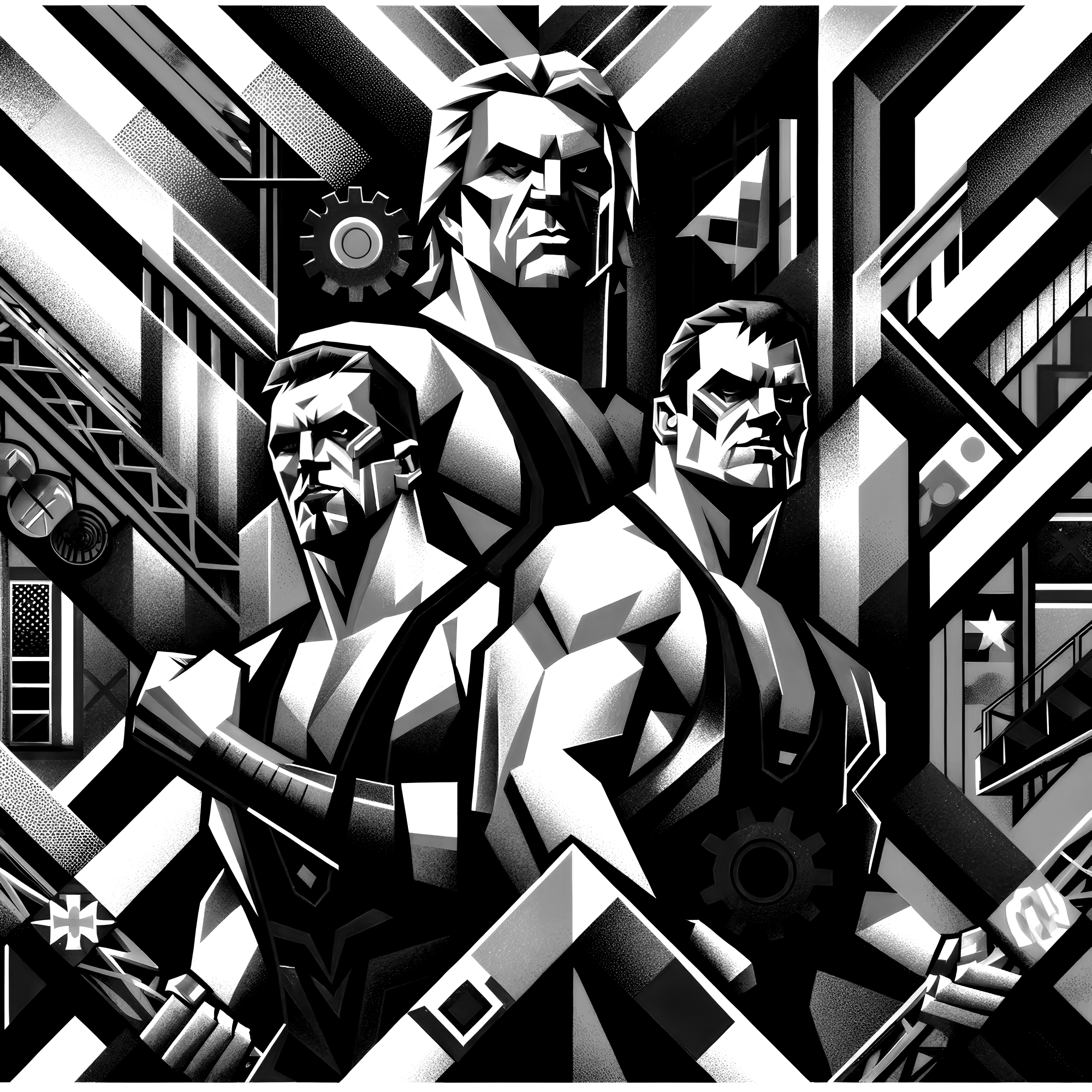
Tucker found himself frequently outmatched and humiliated by the members of this expanding group, who seemed intent on making an example of him. Their matches were marked by interference and underhanded tactics, highlighting the disparity in numbers between Tucker and the Industrial Revolution. It became apparent that Tucker's solo endeavor was at a significant disadvantage without allies to counteract the collective might of his adversaries.
In the midst of these trials, Tommy began to adapt his wrestling style, incorporating more high-flying maneuvers in an effort to outmaneuver his opponents. Despite his efforts to evolve, The Industrial Revolution rejected and mocked his approach, further isolating him within the GWA locker room. This isolation was compounded by his refusal to align with other wrestlers, making his struggle against the faction all the more daunting.
The narrative took an unexpected turn in early 1976 when Jesse Hawkins, Tommy's former tag team partner, made a cryptic appearance at a GWA event in Los Angeles. Hawkins' gesture of handing an envelope to legendary GWA commentator, Buck "Sagebrush" Thompson sparked rumors of a possible reconciliation between the former teammates. However, Tommy addressed these speculations head-on, publicly rejecting Hawkins' overture in a promo. He expressed a lack of interest in rekindling their partnership, signaling a desire to forge his own path independent of past alliances.
Despite Tommy's rejection, Hawkins' presence at GWA events lingered, an enigmatic reminder of unresolved tensions and the complex history between the two wrestlers. Tucker's steadfast commitment to his solo career, amidst the backdrop of personal and professional challenges, underscored a narrative of resilience and independence in the face of adversity.
The "And-The-Horse-You-Rode-In-On" Lumberjack Match
In the GWA, a unique match format was introduced: the "And-The-Horse-You-Rode-In-On" Lumberjack Match, a variation of the traditional Lumberjack Match. In this format, surrounding the ring are lumberjacks - wrestlers of various allegiances - who can actively participate in the match when tagged. This adds a dynamic twist, as any lumberjack at ringside can be legally tagged in to compete. The selection of lumberjacks played a crucial role in the fan's anticipation, as the lumberjacks' allegiances and potential participation in the match added layers of strategy and unpredictability. The lumberjacks, while maintaining their traditional role of preventing escape and returning wrestlers to the ring, also had the opportunity to directly influence the outcome of the match.
The Inaugural Showdown Spectacle, held in the iconic Houston Astrodome, known as the 8th Wonder of the World, was another Carson/Ramirez strategic masterpiece scheduled right before the US Bicentennial in July 1976, capitalizing on the patriotic fervor sweeping the nation. This event was a testament to the grandeur and spectacle of GWA, featuring elaborate entrances, larger-than-life characters, and a storyline culmination that resonated deeply with the American spirit of triumph and redemption. It stood out not just for its high-stakes matches but also for its celebration of wrestling as a form of unparalleled entertainment, drawing fans from across the country to witness the drama unfold in one of the most memorable settings in GWA history.
In the lead-up to Showdown Spectacle '76, a pivotal moment unfolded during a press conference, where Tommy Tucker's fate was sealed with the announcement of his "And-The-Horse-You-Rode-In-On" match against Nikolai Gregorovich, a junior member of the Industrial Revolution and son of the notorious Ironside Gregorovich. The announced crew of lumberjacks were a mixture of babyface and heel wrestlers: "Bayou" Benny Lacroix, "Canyon" Carl Henderson, "Peaceful" Pete Donovan, "The Enforcer" Eddie King, "The Technician" Thomas Reed, and "Railroad" Rick Rhodes. The stipulation that the loser would be banned from GWA competition for a year added high stakes to this already intense match format.
Showdown Spectacle '76: Redemption of Jesse Hawkins
The atmosphere was electric with anticipation in the GWA for the Inaugural Showdown Spectacle '76. The stage was set for a historic encounter that would go down in wrestling lore.
Tommy Tucker, carrying the weight of his past and present, stepped into the ring first, his usual riders satchel slung over the turnbuckle, symbolizing his journey. Before the bell even had rung, the match took a surprising turn when Ivan Petrovich, known for his cunning, manipulated the lumberjack selection. Through a rigged lottery system, he ensured that members of The Iron Alliance, Steel Hammer" Hank Roberts, and "Ironside" Ivan Gregorovich, were called to the ring, instead of the friendlier babyface wrestlers, joining less Industrial Revolution members previously announced, Reed and Rhodes. As the Iron Alliance theme, "Iron Man" by Black Sabbath, blared through the speakers, a sense of impending doom filled the arena.
Tommy faced these overwhelming odds with resilience, but it was obvious his previous beatings at the hands of The Iron Alliance were present on his mind. He was alone in a ring surrounded by enemies, unable to tag anyone for support. As he fought valiantly, the situation grew dire. The relentless attacks from The Industrial Revolution members led to several near pinfalls, and Tommy, exhausted, began to take a severe beating.
In a twist somehow expected, but also still completely shocking, a voice come over the arena speakers, it was none other than Jesse Hawkins. Making a quick promo, Hawkins declared, "Ivan... Ivan.... I told you to leave Tommy be, but you didn't listen. Now you got a problem with The Outlaw!!! I just handed Redwoods' Carson my Once-In-A-Lifetime Former Champions Exemption to join as an Unannounced Lumberjack. I think we've had enough of the Industrial Revolution, tonight, we're celebrating the AMERICAN REVOLUTION!!"

With that, the pulsing bassline and driving drums of "Fortunate Son" by Creedance Clearwater Revival began thumping over the loud speakers, sending rapturous shockwaves through the arena. For Showdown Spectacle '76, Jesse Hawkins dramatically altered his usual ring attire to align with the United States Bicentennial theme, embodying the spirit of the event. He donned a Revolutionary War-themed wrestling kit, complete with elements reminiscent of a Continental Army uniform. This outfit featured a blue coat with red trim, white tights, and a tricorn hat. Hawkins' decision to embrace this theme not only showcased his charisma but also connected with the audience on a deeper level, celebrating the nation's history and wrestling's role in American entertainment culture. The crowd erupted in a frenzy, the closed-circuit cameras shaking from the noise. The camera zoomed in on a fan, whose expression of stun, joy, and relief mirrored the collective sentiment.

Jesse stepped out from behind the curtain and into the spotlight and stood still taking the moment in. He carried a short staff with a Revolutionary-era flag attached to it. The crowd erupted as he began to wave the flag back and forth. tgb He silently nodded to him before he marched down to the ring with a blend of confidence, poise, and purpose, immediately drawing the attention of all participants. He mockingly pretended to be limping and playing a fife. There's a brief moment as the Industrial Revolution Lumberjacks begin to make their way towards Hawkins, attempting to cut him off from Tommy. A wild-eyed insanity flashes across his face before he's swarmed by all 5 members on the floor in a brawl.
In the ring, Tommy, seeing his former partner, was reinvigorated, fighting with renewed vigor until getting a brutal Double Axe Handle from Steel Hammer that left him delirious and swinging wildly. As Hank Roberts arrogantly turned his back to tag in The Technician, Tommy staggers towards the corner nearest Hawkins, his desperate cry of "Jesse!" echoing throughout the arena. In a leap of faith, Tommy falls back towards the corner and miraculously tag the outstretched arm of the Outlaw, who had just broken free from the restraints of 4 Industrial Revolution members.
What followed was a spectacle of raw power and determination, the sound technicians in the Astrodome recorded 113db from the crowd's pop. Jesse, The Outlaw, unleashed a fury upon The Technician, and as tag after tag was made, he faced each member of The Industrial Revolution alone. It was an intense battle, with Jesse defending Tommy and holding off the attackers. For ten grueling minutes, Jesse withstood punishing blows, yet stood undeterred, a sentinel over his fallen partner.
As the match reached its climax, all members of The Industrial Revolution swarmed the ring. Tommy was still slumped down in a ring corner. Standing between them and Tommy was Jesse, fists clenched and ready. One by one, he fought them off one more time, his resolve unbreakable. After tossing out all of the Industrial Revolution Lumberjacks one-by-one, only an overmatched Nikolai remained. In an incredible display of endurance and skill, Jesse ultimately pinned Nikolai, securing a hard-fought victory for Tommy.
On the outside of the ring, Ironside had to be restrained by the other members of the Industrial Revolution due to his anger at Nikolai's defeat. After checking on Tommy, Hawkins just beamed and pointed at Gregorovich and Roberts, indicating his challenge for their Tag Team championship belts. Tommy limped up and raised Hawkins' hand in victory in the center of the ring, a joyous smile on his bruised face.
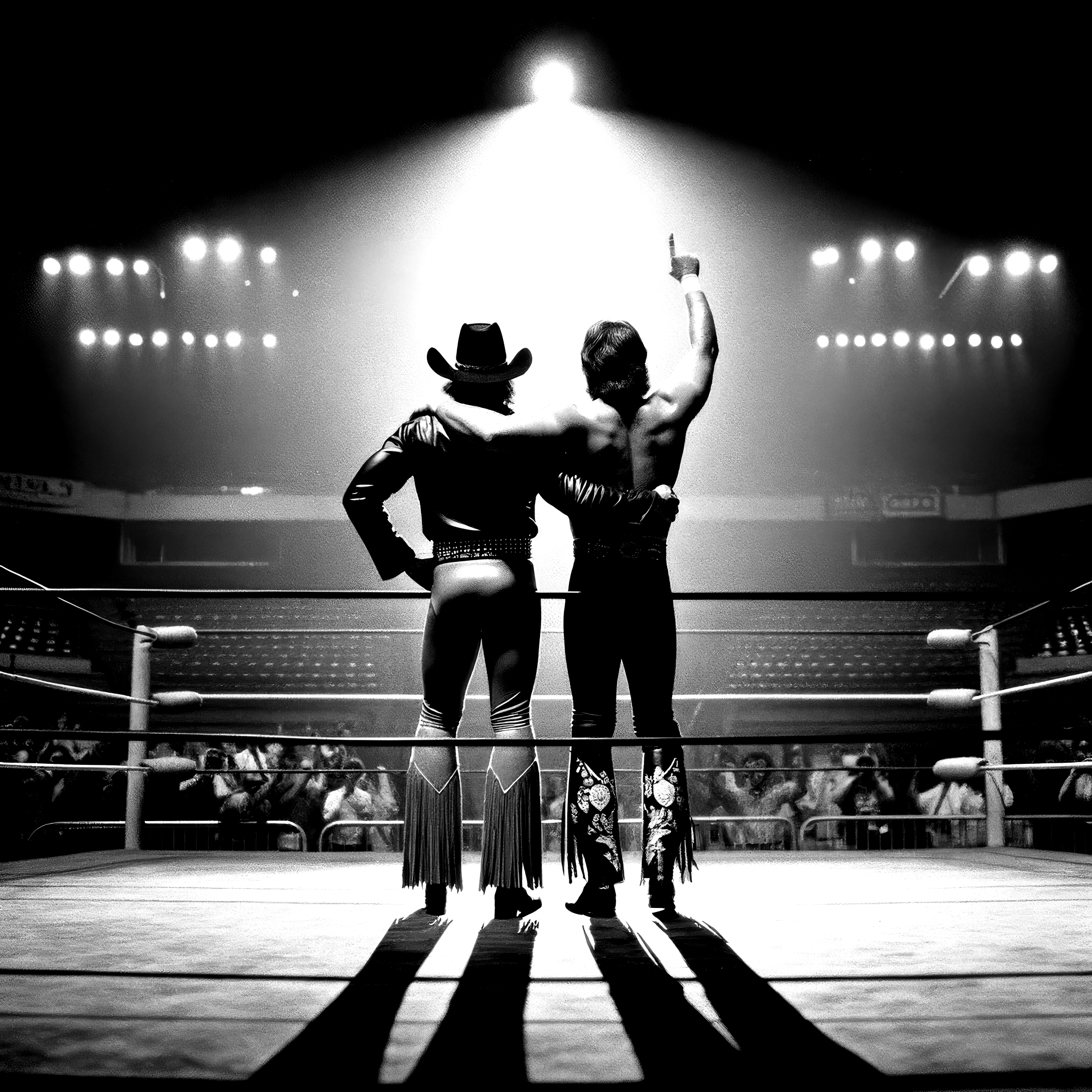
This win was a symbol of redemption for Jesse Hawkins and a rekindling of one of the greatest partnerships in GWA history. The Renegade Riders had triumphed against insurmountable odds, reestablishing themselves as a force to be reckoned with. This victory not only redeemed Jesse but also set the stage for an intense feud with The Iron Alliance, reigniting the passion and excitement that had always been at the heart of their storied career.



